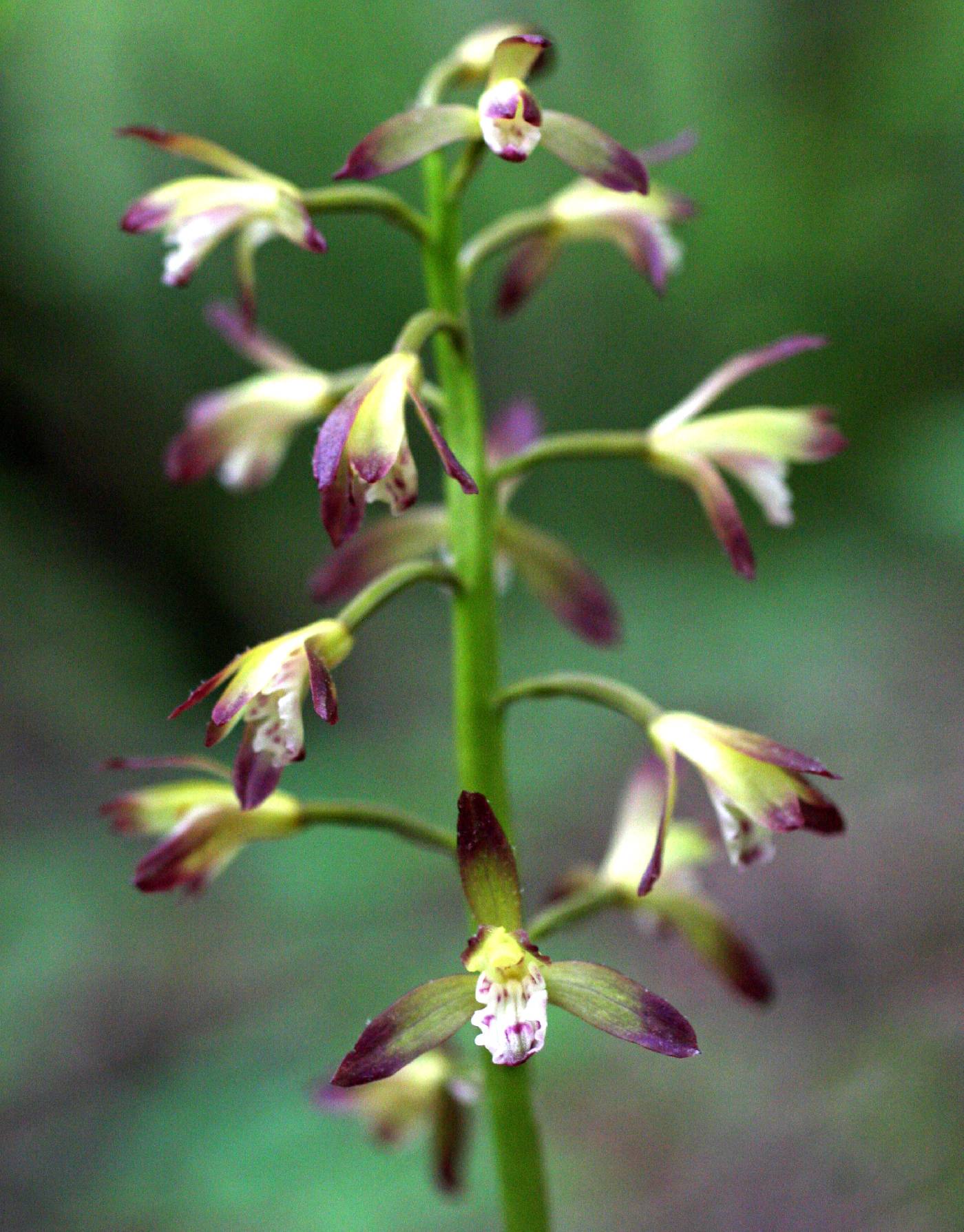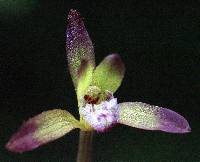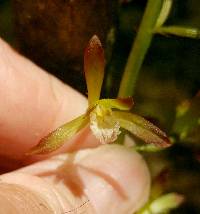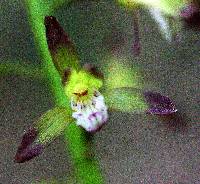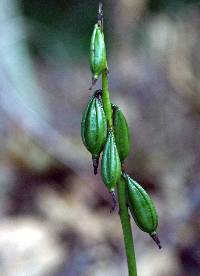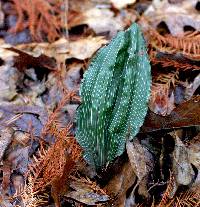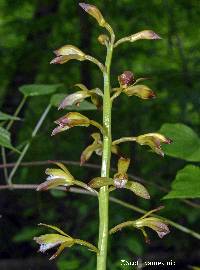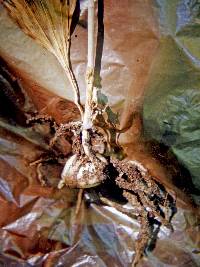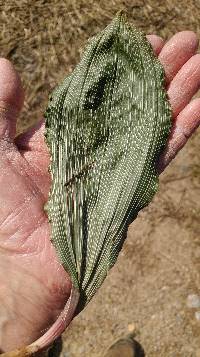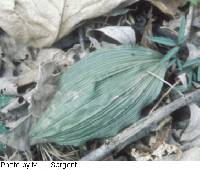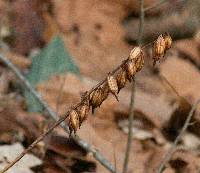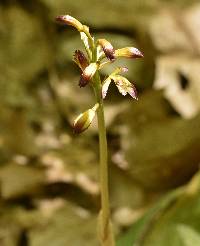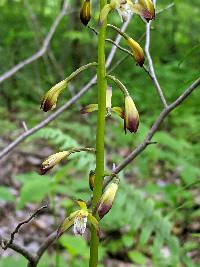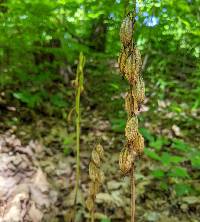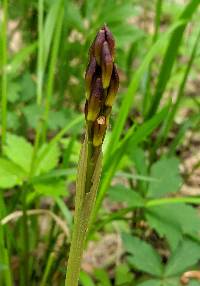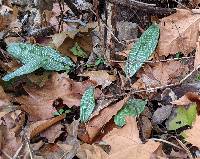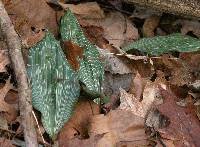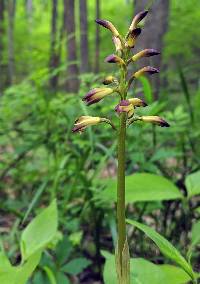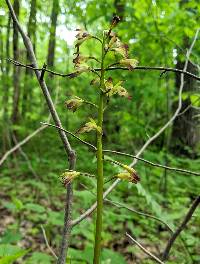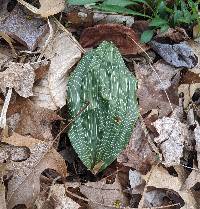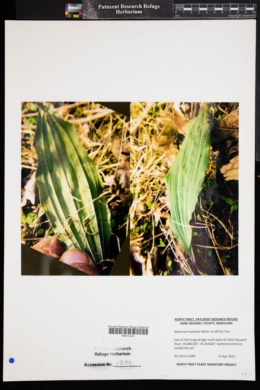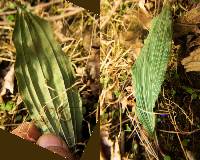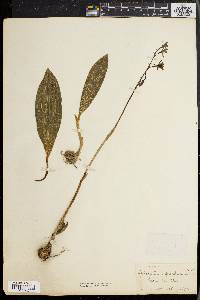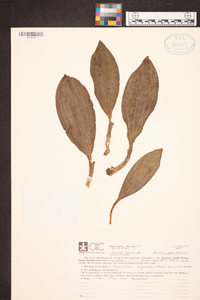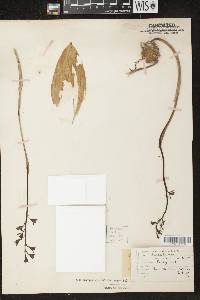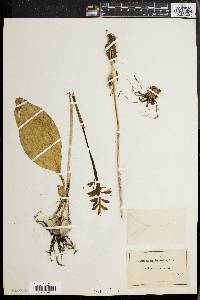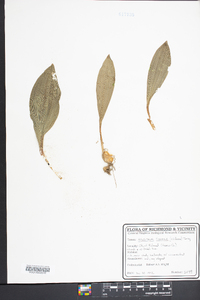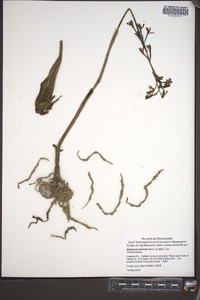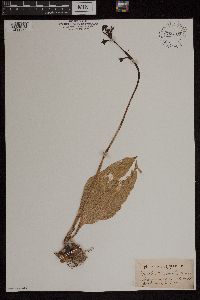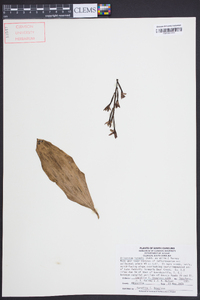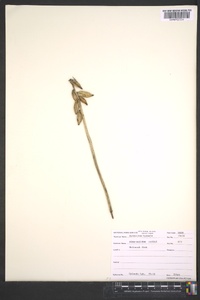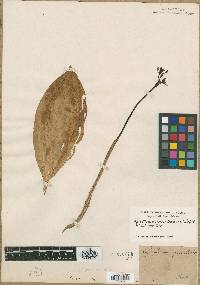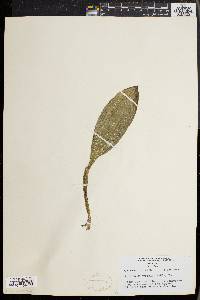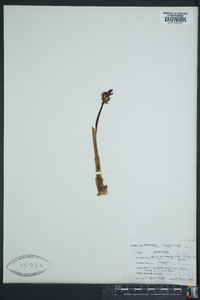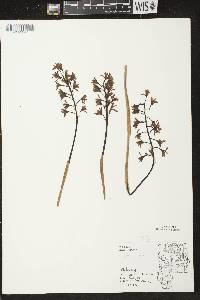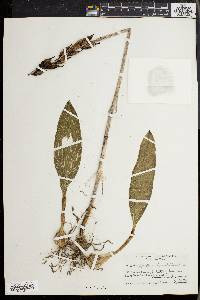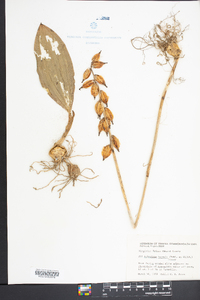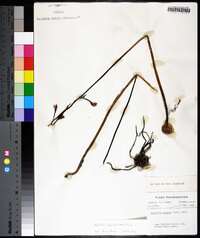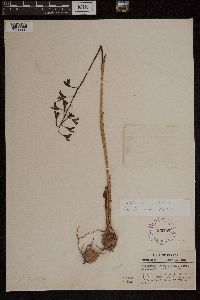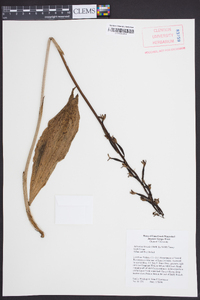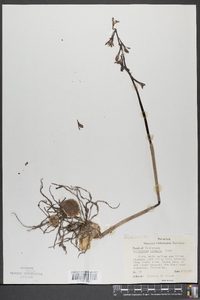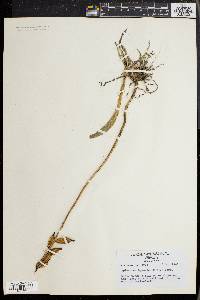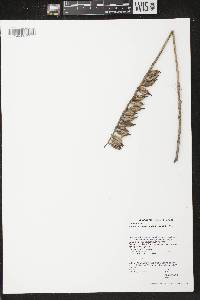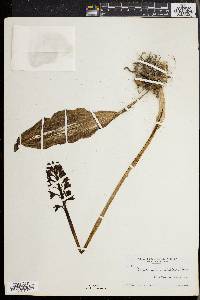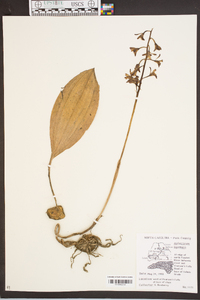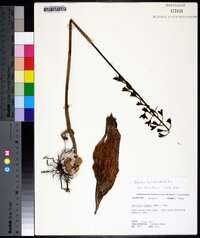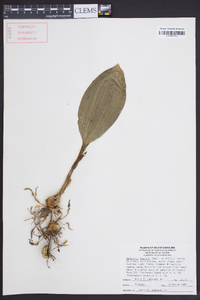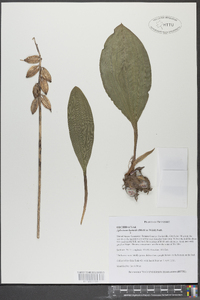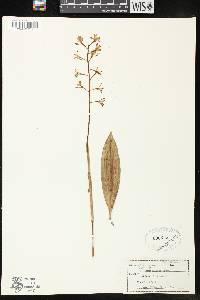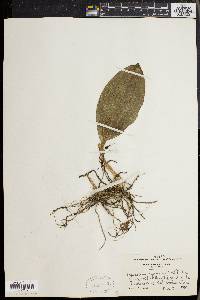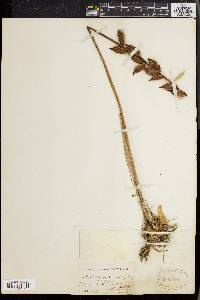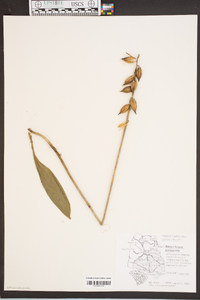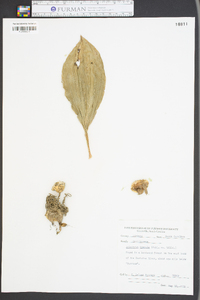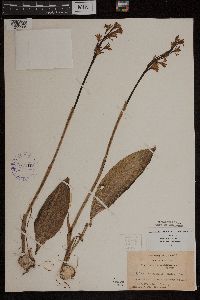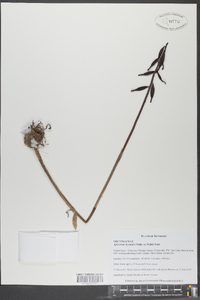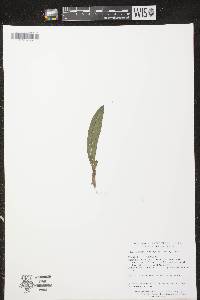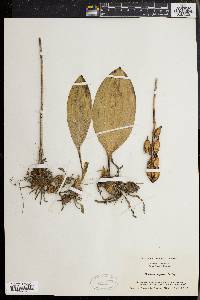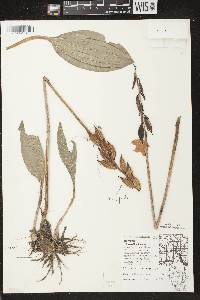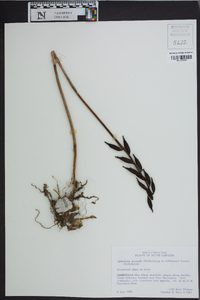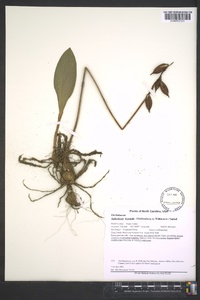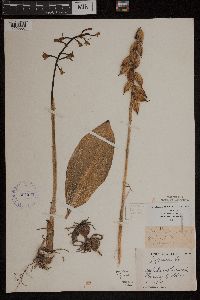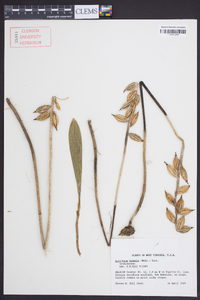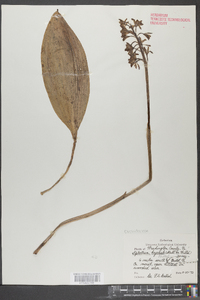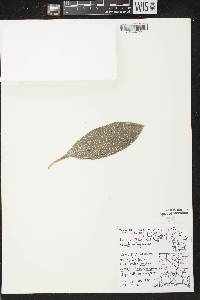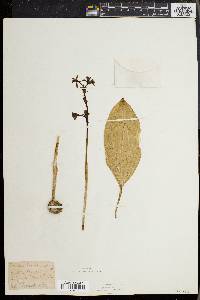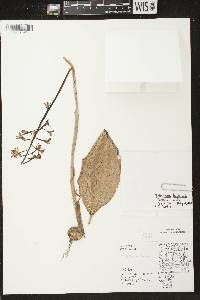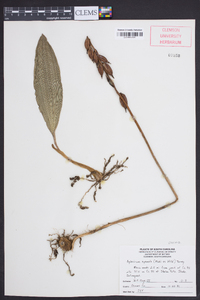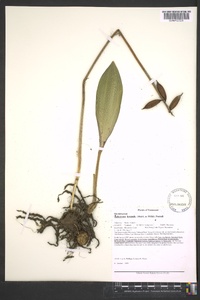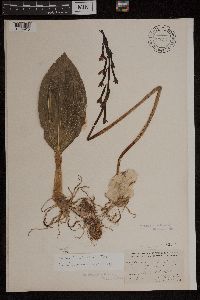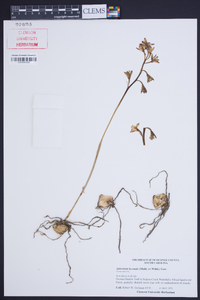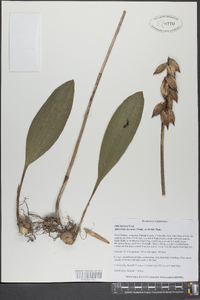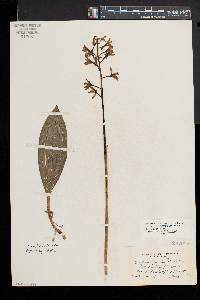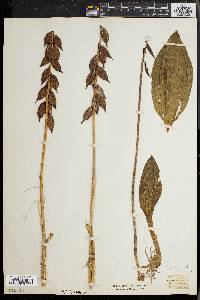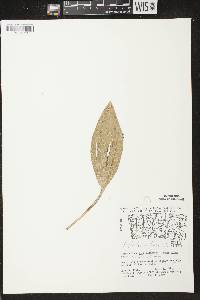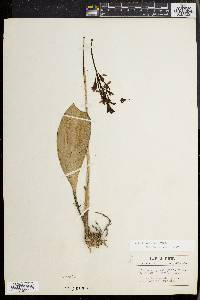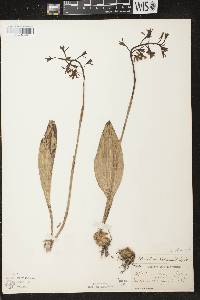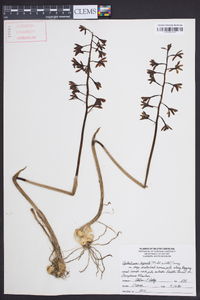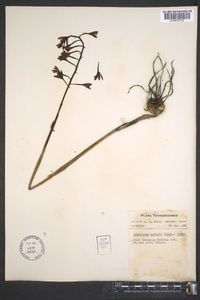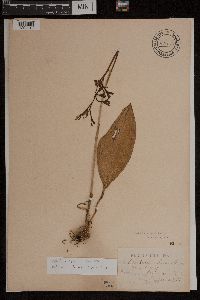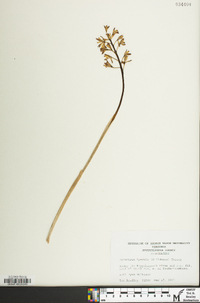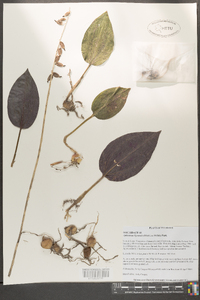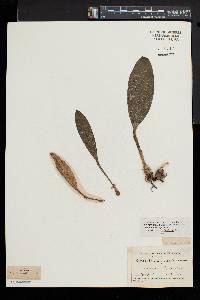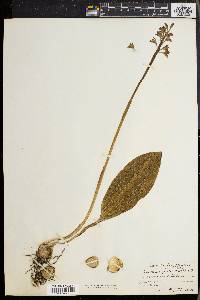Aplectrum hyemale
|
|
|
|
Family: Orchidaceae
Adam-and-Eve, more...Putty Root
[Aplectrum hyemale f. pallidum (House) House, moreAplectrum shortii , Aplectrum spicatum var. pallidum] |
Plants 18-50 cm. Leaves persistent, petiolate; blade narrowly to broadly elliptic, prominently and irregularly plicate, 10-20 × 3-8 cm, abaxially usually maroon or greenish purple, adaxially dark green with whitish veins. Inflorescences: floral bracts inconspicuous, 3-7 × 1.5 mm, apex subulate to acuminate. Flowers prominent but inconspicuously colored; sepals spreading, greenish or yellowish suffused with magenta or purple-brown, oblong-oblanceolate to narrowly elliptic, 10-15 × 1.8-4 mm; petals parallel to column, greenish or yellowish, suffused with magenta or purple-brown, oblong-oblanceolate, 9-13 × 1.8-3.5 mm; lip white with magenta spots, obovate in outline, 9-12 × 7-9 mm, apex 3-lobed, lateral lobes ascending and flanking column, middle lobe broadly expanded, crenate; column 7 × 2 mm. Capsules ellipsoid, strongly ribbed, 15-30 × 7-12 mm. Flowering late spring. Moist, deciduous, upland to swampy forests; 0--1200 m; Ont., Que.; Ala., Ark., Conn., Del., D.C., Ga., Ill., Ind., Iowa, Kans., Ky., Md., Mass., Mich., Minn., Mo., N.J., N.Y., N.C., Ohio, Okla., Pa., Tenn., Vt., Va., W.Va., Wis. Perennial herb 20 - 45 cm tall Inflorescence: a single, erect, terminal, stalked, elongate, loose, spike-like cluster of five to twenty stalked flowers with each flower subtended by an inconspicuous, 2 - 4 mm long bract. Flowers: greenish white or yellowish with obvious purple markings, small (1.5 - 2 cm long), bilaterally symmetric with one petal formed into a lip, but lacking a spur. The reproductive parts of stamens, stigma and style are fused into a column above the inferior ovary. Sepals: three (one top and two lower lateral), partially spreading or commonly drooping, 0.8 - 1.0 cm long, 2 - 3 mm wide, inversely lance-shaped, greenish white or yellowish with purple tints especially at the tips. Petals: three, upper two small (6 - 8 mm long, 2 - 2.5 mm wide), inversely lance-shaped and lateral above larger, usually inversely egg-shaped, wavy-edged lip. The lateral petals point forward, parallel to the column, and like the sepals, are greenish to yellowish with purple tinting prominent at the tips. Lip white with obvious purple markings, 1 - 1.2 cm long, 5 - 7 mm wide, three-lobed with lateral lobes ascending, and larger central lobe expanded. Fruit: several, short-stalked, drooping, 1.5 - 3 cm long, 0.7 - 1.2 cm wide, elliptic to spindle-shaped capsules with three obvious lengthwise ridges and a pointed beak. Flowering stem: single, erect, hairless, lacking leaves, but with two or three membranous sheaths in the lower half. This leafless structure terminated by flowers is called a scape and technically is not a true stem. Root system: of two, below ground, bulb-like structures (corms, technically shoots or stems) with slender, sometimes fleshy roots. The bulbous corms are not firm or solid, but somewhat soft containing a gelatinous (mucilaginous) or putty-like substance. Leaf: solitary, basal, 12-15 cm long, 6 - 7 cm wide, elliptic with lengthwise pleats, and short stalk. The upper leaf surface is light green with white veins while the lower surface is lightly tinted with purple. New leaves emerge in mid- to late September, remain green and photosynthetic over winter, begin to wither and fade shortly before flowers emerge, and disappear soon after flowering. Similar species: This is the only species of Aplectrum in North America, but some may confuse it with Tipularia discolor since it also has a single green leaf present in winter. However T. discolor blooms later (summer, July to August), has flowers with a conspicuous spur, the leaf is absent at flowering time, the upper leaf surface lacks white veins and usually has purple blotches, while the underside of the leaf is dark purple. The Fairy Slipper orchid, Calypso bulbosa var. americana, also has a single over-wintering leaf, but occurs north of the Chicago Region and has a distinctive slipper-shaped lip on the pink to magenta flower. Flowering: May to mid-June Habitat and ecology: Very rare, in rich mesic woods, especially those dominated by sugar maple and beech, though possibly also in moist flatland areas near edges of seasonal ponds. This species is more common south of the Chicago Region. Several historical populations in our area are now destroyed. This orchid avoids competition for light since it is capable of conducting photosynthesis in the winter when other plants are dormant. Occurence in the Chicago region: native Notes: Most individuals of A. hyemale do not flower, and those that do are hard to find since they are often hidden by vegetation. Case (1987) notes this species may show tendencies toward a saprophytic (mycotrophic) habit in particular microhabitats. The common name "putty root" refers to the sticky substance obtained from the corms, which early American settlers often used as a glue. Another common name is the Adam-and-Eve orchid, which refers to the two underground corms on each plant, where the newest corm (Eve) is an offshoot of the corm from the previous year (Adam) paralleling the Biblical story where Eve was created out of the rib of Adam (Homoya 1993). Etymology: Aplectrum is derived from the Greek word plektron, meaning spur, but preceded by a indicates without, thus referring to the flowers without spurs. Hyemale means winter, in reference to the presence of the leaf during winter. Author: The Field Museum Corms usually 2, connected by a slender 3 cm rhizome; lf basal, its blade elliptic, 10-20 cm, dark green with whitish veins; scape 3-6 dm, with a few linear-oblong, sheathing nongreen bracts; fls 7-15; sep and lateral pet 10-15 mm, purplish proximally, brownish distally; lip 10-15 mm, white, marked with violet; column 7 mm. Rich woods; Mass., Vt. and s. Que. to N.C. and n. Ga., w. to Sask. and Kans. May, June. Gleason, Henry A. & Cronquist, Arthur J. 1991. Manual of vascular plants of northeastern United States and adjacent Canada. lxxv + 910 pp. ©The New York Botanical Garden. All rights reserved. Used by permission. From Flora of Indiana (1940) by Charles C. Deam This orchid is found sparingly throughout the state. In addition to the counties shown on the map it has been reported from the following counties: Hamilton, Lake, Marshall, Porter, Steuben, and Tippecanoe. It is found in deep humus in well protected and shaded spots in beech, black and white, and white oak woods. I recall that on the Clark County State Forest a large colony grew on a slope in a tangle of dense second growth of white oak and grape vines. During the winter the vines and excess of forest growth were removed and I never saw a plant there after that time. I have tried to grow the species at Bluffton in neutral soil in a shaded location but in a few years it disappears. ...... Indiana Coefficient of Conservatism: C = 7 Wetland Indicator Status: FAC Diagnostic Traits: Leaf 1, developing fall and overwintering, usually wilts before flowering; flowering scape a raceme of 3-15 flowers; flower bilateral, the lip 3-lobed and white with magenta spots; capsules pendant, 1.5-3 cm long. |
|
|
|

